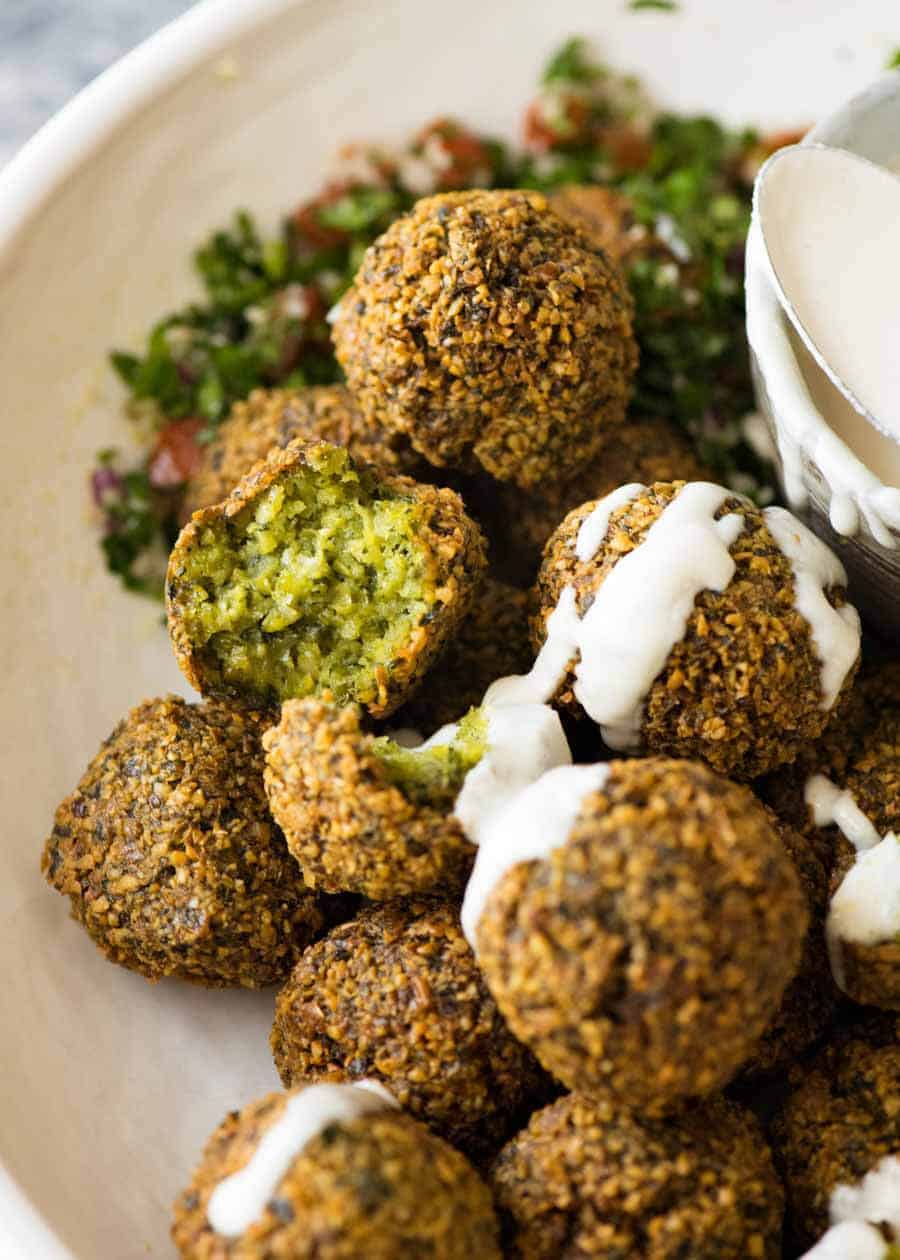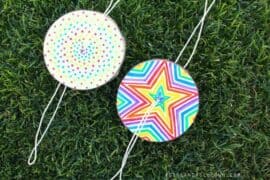Dive into Deliciousness with Homemade Falafel Balls!
Hello, amazing parents out there! Are you on the hunt for a fun, tasty, and healthy recipe that will have your little ones cheering? Look no more because I’ve got just the dish that’s going to rock your family dinners: Falafel Balls! These little bundles of joy are not only a delight to the taste buds but also packed with nutrients that make them a super healthy choice for your kiddos. ?
Before we start rolling our way into cooking, let’s chat about what falafel is. Falafel is a traditional Middle Eastern food typically made from ground chickpeas or fava beans, mixed with herbs and spices, and then deep-fried to golden perfection. They’re vegetarian, full of protein, and incredibly versatile—perfect for a family meal or a snack on the go!
Why You and Your Family Will Love This Recipe
- It’s Fun to Make: Get your kids involved! Rolling falafel balls is like playing with edible playdough, but way more rewarding.
- Health Benefits: Chickpeas are a great source of protein and fiber, which are essential for growing bodies.
- Customizable: You can add your favorite herbs and spices to switch things up. Who doesn’t love a recipe that you can make your own?
- Food Education: It’s a fantastic way to introduce your family to international cuisine and foster an adventurous palate in your children.
Ingredients for Your Fantastic Falafel Balls
Alright, before we jump into the mixing bowl, let’s make sure we have all our ingredients ready to go. For this family-friendly falafel balls recipe, you’re going to need:
- 2 cups dried chickpeas (soaked overnight, then drained)
- 1 small onion (finely chopped)
- 4 cloves of garlic (minced)
- 1/2 cup fresh parsley (chopped)
- 1/4 cup fresh cilantro (chopped)
- 1 teaspoon ground cumin
- 1 teaspoon ground coriander
- 1/2 teaspoon cayenne pepper (optional, depending on your kiddo’s taste buds)
- 1/2 teaspoon salt (adjust to taste)
- 1/2 teaspoon baking soda
- 4-6 tablespoons all-purpose flour (as needed)
- Vegetable oil for frying
Step-by-Step Guide to Making Falafel Balls Your Kids Will Devour
Soak Your Chickpeas
First things first, do not skip the soaking part! Canned chickpeas won’t do the trick here, as the texture will be too mushy and won’t hold together when frying. Soak the dried chickpeas in plenty of water overnight—this will help them cook more evenly and result in the perfect crispy on the outside, fluffy on the inside falafel texture that we all adore.
It’s Mix’n Time
Once your chickpeas have soaked and are ready to go, drain them and pat them dry. Toss them in a food processor along with the onion, garlic, parsley, cilantro, cumin, coriander, cayenne pepper (if using), and salt. Blitz until you have a crumbly dough-like consistency. If you don’t have a food processor, a blender or even good old-fashioned muscle power and a pestle and mortar will do just fine!
What makes falafel truly glorious is getting that mixture just right. So take a moment to high-five your kids because teamwork is the spice of life and cooking! ?
Ready, Set, Shape!
Now comes the part the kiddos have been waiting for: shaping those falafels. Stir the baking soda and flour into your chickpea mixture. Then, scoop a tablespoon at a time and let those little hands roll them into balls or slightly flattened discs—perfect for a fun and interactive cooking session with the whole family.
As they roll, chat about the origins of falafel, share stories, or even throw in some food-related trivia. Cooking is not just about the food; it’s about the memories you create together. ?
With your falafel balls all shaped and ready, it’s time to move on to cooking them to perfection. But before we light up the stove, remember safety first, especially with the young ones in the kitchen.
Stay tuned as I share the secrets to frying up these delicious falafel balls and some inventive serving suggestions that will have everyone at the table asking for seconds. And as soon as you see those happy, munching faces, you’ll know that this falafel adventure was so worth it. Let’s get the ball rolling, shall we?

Five Things Parents Should Know When Preparing Falafel Balls
1. The Importance of Good Prep
Before diving into this culinary adventure, it’s crucial to be well-prepared. That means having all your ingredients measured and ready, and your equipment on hand. This approach helps keep the cooking process smooth and stress-free – a must when the little ones are involved!
2. Embracing the Mess
Let’s face it, cooking with kids can get a tad messy, but that’s all part of the fun. Set up a workspace that’s easy to clean, and don’t fret over spilled flour or rogue chickpeas. Remember, it’s all about creating joyful moments with your family. Plus, kids are more likely to eat what they’ve helped make, even if it means a little extra cleanup afterward.
3. Nutritional Considerations
Chickpeas are a fantastic source of nutrition, but for some, legumes can be a bit heavy on the tummy. Introducing them slowly into your family’s diet can help everyone adjust. And don’t forget to consider any herb or spice sensitivities—tailoring the recipe to your family’s taste and dietary needs ensures everyone can enjoy these delicious falafel balls.
4. Cooking with Care
Frying can be intimidating with youngsters around, so always prioritize safety. Keep the kids at a safe distance from the stove and hot oil, and handle the frying process yourself. To involve them, let them watch from a secure vantage point and explain what you’re doing. Safety can be an excellent learning opportunity!
5. The Power of Patience
When it comes to cooking with children, patience is a key ingredient. Things might not go as quickly as when you’re cooking solo, and the falafel shapes might be more ‘creative’ than perfect spheres. But remember, it’s the experience—not just the end result—that matters. Embrace the imperfect balls and cherish the giggles and flour-dusted smiles.
Let’s Get Frying!
Heat up a generous amount of vegetable oil in a deep frying pan or pot over medium heat. You’ll want enough oil so the falafel balls can float without touching the bottom of the pan. To test if the oil is ready, drop a small piece of the mixture into it—the oil should bubble and the piece should start to fry immediately without burning.
Gently place the falafel balls into the hot oil, being careful not to overcrowd the pan. Fry them in batches if necessary. Turn them occasionally with a slotted spoon until they are evenly golden brown all over, which should take about 5-7 minutes depending on size.
Once cooked, transfer the falafel balls to a plate lined with paper towels to drain any excess oil, and let them cool just a tad—they’ll be piping hot right out of the fryer.
Serving Suggestions for the Ultimate Falafel Feast
There are so many fantastic ways to serve falafel! Stuff them in warm pita pockets with a rainbow of veggies and a dollop of tahini or yogurt sauce. Or why not make a colorful falafel bowl with quinoa, avocado, tomatoes, and a bright lemony dressing? The possibilities are truly endless, and your family can enjoy building their own perfect falafel creation. The more interactive, the better!
What’s even more wonderful is that falafel is just as amazing the next day, so pack them in school lunches or have them ready for an after-school snack. Your kids might even look forward to Monday’s lunchbox, who knew?
As you can see, making falafel balls is not only a chance to whip up a delicious meal but also an opportunity for family bonding and learning. Let the scents of fresh herbs and spices fill your home, and your hearts with the joy of shared culinary creativity. Happy falafel making!
For more great articles please see here. For more information see here
Disclaimer
The articles available via our website provide general information only and we strongly urge readers to exercise caution and conduct their own thorough research and fact-checking. The information presented should not be taken as absolute truth, and, to the maximum extent permitted by law, we will not be held liable for any inaccuracies or errors in the content. It is essential for individuals to independently verify and validate the information before making any decisions or taking any actions based on the articles.




